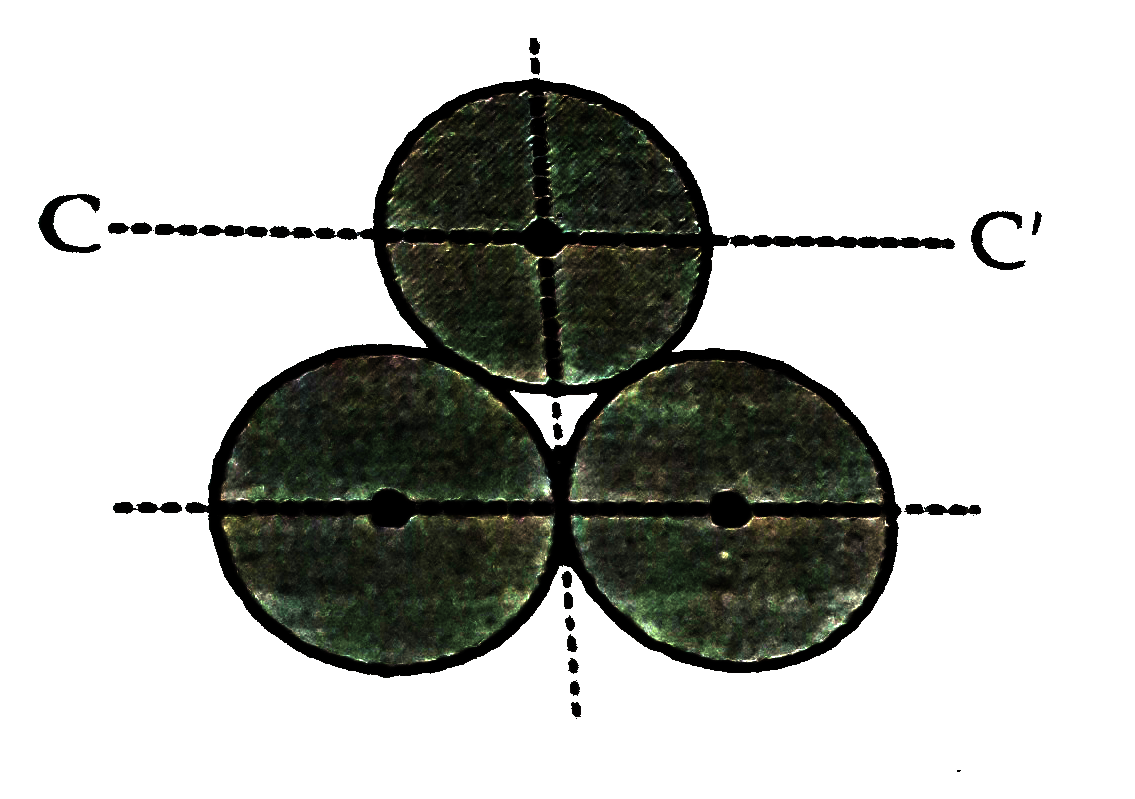Thee uniform spheres each having a mass M and raius a are kept in such a way that each touches the other two. Find the magnitude of the gravitational force on any of the spheres due to the other two.
The correct Answer is:A, B, C, D
→FCB=Gm24a2cos600→i+Gm24a2.sin600∘→j
vecF_(CA)=-(Gm^2)/(4a^2) cos 60^@ veci+(Gm^2)/(4a^2).sin60^@vecj.<br><imga≤ocr_imageload∈g=lazysrc=https://d10lpgp6xz60nq.cloudfront.net/physics_images/HCV_VOL1_C11_E01_046_S01.pngwh=80%mx-autosty≤=background:white;><br>vecF_(CB)=vecF_(CB)+vecF_(CA)<br>=+vec(2Gm^2)/(4a^2) sin 60^@ vecj<br>=+(2Gm^2)/(4a^2)xxsqrt3/2<br>Magnitude=(sqrt3 Gm^2)/(4a^2)
Topper's Solved these Questions
Similar Questions
Three uniform spheres, each having a mass M=5kg and radius a=2.5m are kept in such a way that each touches the other two. Find the magnitude of the gravitational force in GN on any of the spheres due to the other two.
View SolutionThee spheres each of mass M and radius R are placed in contact with each other as shown in the figure here. Then the moment of inertia of the system about the axis CC' is

View Solution
Knowledge Check
Three uniform spheres each of mass m and diameter D are kept in such a way that each touches the other two, then magnitudes of the gravitational force on any one sphere due to the other two is
A3Gm2D2B2√3Gm2D2C√3Gm24D2D√3Gm2D2Three identical spheres, each having a charge q and radius R. are kept in such a way that each touches the other two. The magnitude of the electric force on any sphere due to the other two is
A14πε0(qR)2B√34πε0(qR)2C√316πε0(qR)2D√516πε0(qR)2Three uniform spheres, A, B and C each of mass M and radius R are kept in such a way that each sphere touches the other two. What is the magnitude of the gravitational force acting on A due to B and C ?
A√3GM24R2B√3GM2R2C3GM24R2D√3GM22R
Two vectors having equal magnitudes A make an angle θ with each other. Find the magnitude and direction of the resultant.
View SolutionThe masses of two spheres are 10 kg and 20 kg respectively. If the distance between their centres is 100m, find the magnitude of the gravitational force between them.
View SolutionThe masses of two spheres are 10 kg and 20 kg respectively. If the distance between their centres is 100 m, find the magnitude of the gravitational force between them.
View SolutionTwo metal spheres each of radius r are kept in contact with each other. If d is the density of the material of the sphere,then the gravitational force between those spheres is proportional to
View SolutionTwo spheres each of mass M and radius R are separated by a distance of r. The gravitational potential at the midpoint of the line joining the centres of the spheres is
View Solution
